Affiliate Disclosure: If you buy something through some of the links on this post, you won’t pay any extra, but we’ll get a small commission. This helps us keep things running. Thanks for your support!
Toronto’s First Beyblade Burst Tournament in 10 Months
On July 4, 2021 the Toronto Beyblade community gathered for HIGH PARK THROWDOWN 12 at High Park. It was played using Burst Format with some experimental rules that I will explain below.
This was our first tournament in nearly 10 months!
The reason is that we had been unable to host events due to strict measures that were implemented towards the end of 2020 in Ontario due to the pandemic. Our last two events were Justin TC’s Birthday Bash and Justin Thunder Cloud’s Skateboarding Adventure in September 2020.
Needless to say, it was great to see everyone after such a long time! This was the longest I–and the Toronto community–had ever gone without a tournament in probably over 10 years.
Tournament Details
- Date: July 4, 2021
- Location: High Park – Toronto, ON
- Format: Burst Format – Unranked (Rulebook)
- WBO Event Page
- Challonge Bracket
What You Will Learn In This Article
This article represents the first in a two part series. Through expressing my experience participating in and hosting HIGH PARK THROWDOWN 12, I aim to teach you about:
- How I conduct research before competitive tournaments.
- How I choose new combos to test with and use in tournaments.
- How unranked events are the perfect arena for organizers to test experimental rules.
Because it had been such a long time, a big focus of mine was the testing and research process to get myself up to speed on the current state of the Beyblade metagame.
Beyond this, a big part of the process for me as the person who was also the organizer of the event was the rules we were going to play with. Given that it had been so long since we last played, doing an unranked event seemed appropriate. And it also offered a great opportunity for us to test out some new experimental battle format, play area, and knocked-out definition rules.
Scroll down to read more about all of this!
The second part of this series is a report about the tournament itself and what the best Beyblade Burst Dynamite Battle combos for tournaments are right now.
BeyBase HIGH PARK THROWDOWN 12 Article Series
- Part 1: How to Prepare for a Competitive Beyblade Burst Tournament (HIGH PARK THROWDOWN 12 Report)
- Part 2: What are the Best Beyblade Burst Dynamite Battle Combos for Tournaments? (HIGH PARK THROWDOWN 12 Report)

25 years. 4 generations. And we still don’t know: is Beyblade a sport? A toy?
I wrote a 100 page article to answer this question.

Enter Below for a Chance to Win a Free BX-33 Weiss Tiger 3-60U!
Giveaway Ends August 4, 2024 – Sponsored by malloftoys.com
Giveaway Details
- The Prize: One brand new Takara-Tomy Beyblade X BX-33 Weiss Tiger 3-60U from malloftoys.com.
- How to Enter: Subscribe to the BeyBase Newsletter below by August 4, 2024.
- How to Win: The winner will be selected at random from all active BeyBase newsletter subscribers as of August 4, 2024. The winner will be contacted by e-mail directly within two weeks after August 4, 2024. If you do not win, you will not receive an email.
- You can unsubscribe at any time, but must continue your subscription to the end date of the giveaway to be entered in the draw.
- If you’re already subscribed, you’ve been entered!
Subscribe to the BeyBase Newsletter to Enter:
Pre-Tournament Testing & Research Process
Last August heading into Toronto’s first tournament since January 2020–BE A HIRO–I had an understanding of how powerful new Beyblade Burst Sparking parts like the Rage Ring and 3A Chassis were.
But there was still a part of me hanging on to the past using things like Archer Hercules Layer and Naked Layer Base.
My downfall was ultimately the new Tempest Ring in the finals of that event.
In the following tournament–Justin TC’s Birthday Bash–which was the last standard Burst Format tournament before this one, I shifted my belief in that part dramatically after seeing how dominant it was at BE A HIRO.

As a result, in Justin TC’s Birthday Bash I went all in with Tempest Diabolos Wheel Xtend Plus 1S and Tempest Diabolos Wheel Atomic 1S, piloting them straight into the finals.
But it was at that point which I shifted my strategy entirely to something much more offensive. I relied on Rage Diabolos Xtreme’ 3A and Brave Lucifer Evolution’ 2A and was able to win the tournament because of it.
While other people did use Rage combos and attack combos, I felt the Xtreme Dash Driver variant was strong enough to set me apart from most players due to the skill required to use it.
And my awakened Evolution’ was perfect for countering those who tried to use Xtreme’ against me.
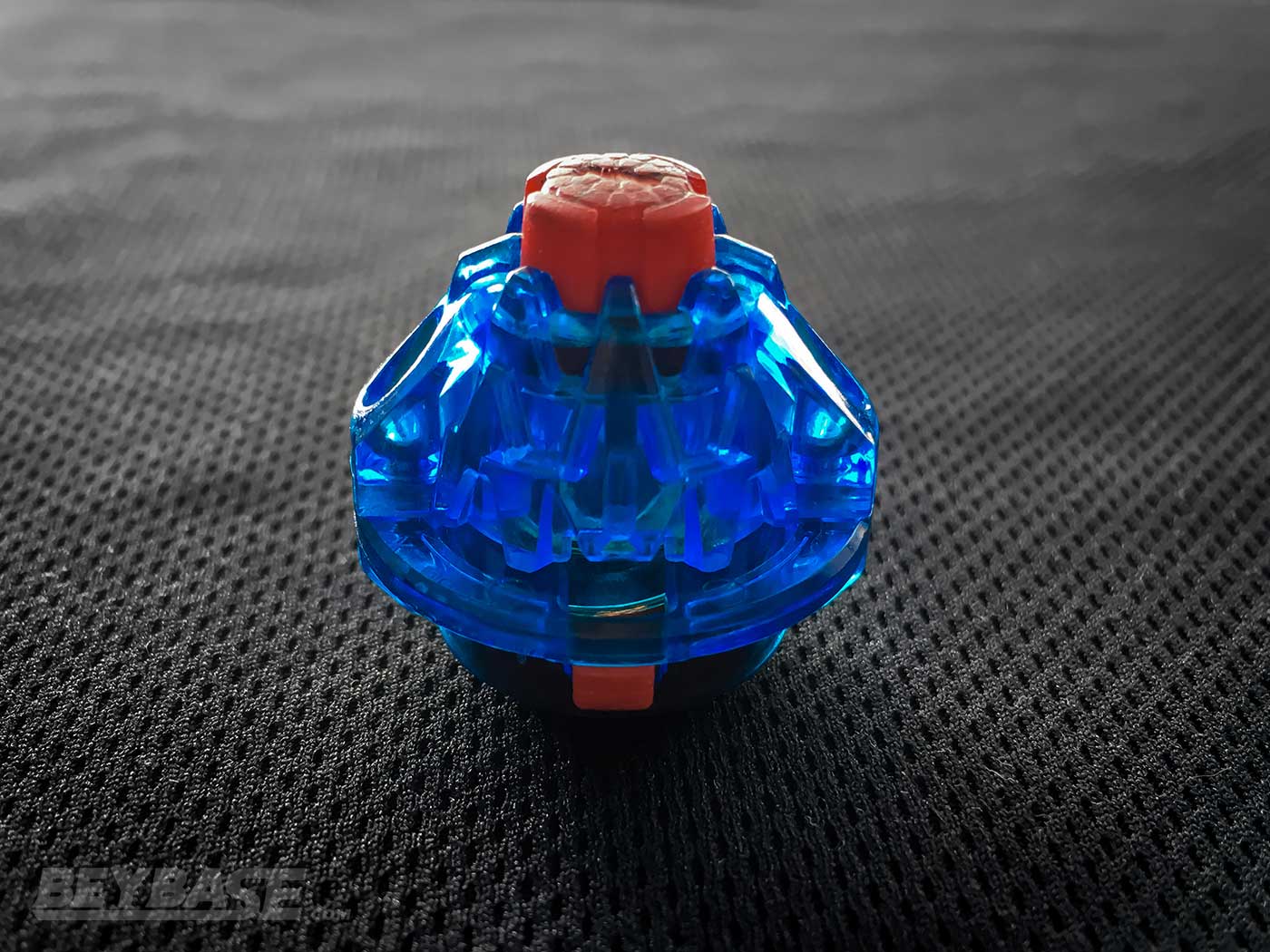
Rather than relying on Tempest to win me the tournament, I relied on it simply as a safe vessel to secure my spot in the finals. And most importantly: I believed in it and didn’t second guess myself. Then I did the same for the other parts I used in the finals.
Although this occurred ten months prior to HIGH PARK THROWDOWN 12 (Burst Format), this experience was still fresh in my mind as I was gearing up for this event.
As such, I knew there were two things I mustn’t forget in order to be successful:
- The importance of not underestimating the new in favour of the old. If there’s anything that’s a sure thing in Beyblade … it’s power creep over time of new parts as they are introduced. It’s not always black and white in terms of the transition, but newer parts typically win out over time.
- The importance of preparation. This means both research and testing. Through this, you build a base of experience and knowledge that would allows you to build an internal belief that the choices you make in the moment at a tournament are the correct ones. This then translates to things like how confidently you are able to launch; you’re not guessing. You know.
With these two things in mind, here is how I approached preparing for the tournament:
1. Compiling the Latest WBO Winning Combinations Data
Moving Forward from Beyblade Burst Sparking
After having just finished the testing and research process for my The Top 5 Best Beyblade Burst Combos of 2021 (Selected by Expert Players & Organizers) and How Competitive Beyblade Burst Has Evolved From 2019 to 2021 articles, my level of familiarity with the Beyblade Burst Sparking era was very high in spite of my inability to play in any tournaments myself for the past ten months.
The time it took to do that however took away any time I would have had to start getting up to speed on how parts from the brand new Beyblade Burst Dynamite Battle series were starting to affect the metagame.
The Influence of the Florida Beyblade Premier: The Beyblade Summer Games
So, the natural place to start for me was to first start taking a look at how other WBO Beyblade communities and players were reacting to and using these parts in order to have a rough idea of what I should be looking at first when I got around to testing things for myself.
Especially at this stage in Beyblade Burst where there is such a vast pool of parts which could potentially be viable in different ways, it helps to pay attention to the community to get some ideas.
Where I decided to start with this was on the day of the Florida Beyblade Premier: The Beyblade Summer Games, hosted by Conce7 of the WBO.
I appeared via livestream on a panel for that event, and then paid particular attention later in the day during the finals at each of the matches and choices that players were making.
This was the largest event in quite some time on the WBO with players from several states across the USA competing, so it was a good barometer for what we might be able to expect moving forward in other tournaments.
May – June 2021 WBO Winning Combinations Spreadsheet
From there, I took the winning combinations data of that event along with the data from all other recent WBO Beyblade tournaments between May and June 2021 and compiled it into a private spreadsheet:
May 2021 – June 2021: Burst Format – WBO Organized Play Winning Combinations
This has since been added to the WBO Public Tournament Data Archive.
I used this to help reinforce the sense I was getting after watching the Florida Beyblade Premier: The Beyblade Summer Games livestream and to dive a bit deeper into certain statistics about the overall usage of certain parts in comparison to the past period I had just analyzed for March and April 2021.
2. Testing the New Beyblade Burst Dynamite Battle Parts
Dynamite Battle Parts I Focused On
Armed with this knowledge, I set out to begin testing all of the new Beyblade Burst Dynamite Battle parts. In the weeks leading up to the tournament, I spent probably 15-20 hours testing.
Blader Kei’s Pre-Tournament Testing Focus:
I placed particular focus on the following:
The first four were the most obviously powerful parts from what I had observed so far, and then both Roar and Bahamut were so new that I had to take some time to test them in order to hopefully garner some type of advantage over players who might not have time to do the same before this tournament.
And the Never Driver seemed at first glance like it could be an interesting alternative that maybe could take the place of things like the Atomic Driver and even Xtend+ Driver for same-spin stamina with decent opposite spin performance.
Beyblade Burst Combinations I Tested
Of course, these new Beyblade Burst DB parts were not necessarily paired entirely with other DB parts during my testing, but with other powerful previously existing parts as well.
I tested a lot of different things and cannot outline them all here, but here’s a few of the key things I tested and thought about:
Dynamite (F Gear)/Vanish on Giga/Tapered Drift
One thing I realized very quickly was how relatively calm the Dynamite Blade + F Gear and Vanish Blade were when paired with the Drift Driver and launched hard.
I had witnessed it before as Dynamite with the F Gear on Drift was really evidently powerful during the Florida Beyblade Premier: The Beyblade Summer Games, but it was a little bit unbelievable to see it first hand knowing how erratic and risky the Drift Driver had been with most other Layers up until then.
This presented a pretty significant problem in my eyes because it took away some (but not all) of the risk of using the Driver that existed before.
Rage Helios 2 (MCC) Quick’ 3A
I started to dislike using the Rage 3A on Xtreme’, despite it being the number one combo on my recent The Top 5 Best Beyblade Burst Combos of 2021 list.
The reason for this was mainly the matchup against Dynamite (F Gear) Belial Giga Drift-6, which seemed a bit tough for it.
What I really needed was an attack type that had the ability to win against both spin directions.
One of the first things I tried was the Quick’ Driver, as I had noticed one of my newer copies of it (the green one) seemed to have grippier rubber. I had always liked Quick’, but never loved it because the original versions of it that were released seemed to have a harder rubber. Maybe I’m just imagining it, but there was something about this new one that felt this way and I like how it performed on this combo.
I find especially with opposite spin Drift combos, your main chance of victory with attack types is to get a very strong hit at the beginning of the battle.
By heavily banking with Quick’, it can sweep in at high RPM at the beginning of the battle to knock-out the opponent.
Using Quick’ also makes it easier to launch much harder because it is more controllable than the Xtreme Dash Driver. This makes it easier to produce the higher attack power necessarily to KO something like Drift in opposite spin.
And in same-spin, it means your opponents don’t have as much of a luxury to weak launch for fear of being out-spun.
How to Build MCC RHl2.Qc’ 3A

-
Rage Ring & 3A Chassis:
-
Helios 2 Sparking Chip & Metal Chip Core:
-
Quick’ Driver (1 of the following):
Dynamite (F Gear) Belial/Vanish Bahamut Giga Rise
For months and months now since I published my World Spriggan review, I’ve been singing the praises of the Rise Driver. I also included World Diabolos Paradox Rise 1S on my top five personal list of best Beyblade Burst combos recently.
In crafting that list, I put some serious consideration towards whether to make it the variant which uses the awakened 2D Chassis, but it’s honestly not something I have been able to test myself yet as I haven’t awakened my 2D Chassis.
Still, the idea of that variant (explained on the WBO here) stuck with me. The idea that you could have a combo that is both insanely aggressive with some level of controllability while also having great opposite spin performance was really attractive.
One of the things which I don’t like about the Drift Driver is how poorly it rides the ridge of the Burst BeyStadium Standard Type.
My feeling was that because awakened (worn down) Rise Drivers can ride the ridge a bit better and have either comparable or better stamina than Drift, it might give me an edge over everyone else in the tournament who would surely be using Drift.
I tested this combo a lot and started to believe that I was right.
Even though Drift is I think slightly better for opposite spin matchups overall, the offensive upside of Rise (along with the element of surprise) made it extremely attractive to me going into HIGH PARK THROWDOWN 12 (Burst Format).
Using Rise in this way is one of the best examples in recent memory that shows how beneficial it can be to think outside the box.
Everyone was going one direction and it was dominating the public conversation and winning combinations of recent tournaments (Drift). I decided to go in another direction and was rewarded for it (as you will find out in the second part of this article series).
It is a fine line to walk and I have in the past lost some matches by going against the grain … but in at certain times in the game I would rather lose doing that than lose trying to do what everyone else is doing.
There’s nothing wrong with following the crowd if you really understand why things are that way, aren’t just doing it blindly, know how to optimize your combo, and how to pick your spots (like I did going all-in with Tempest combos for the first stage of Justin TC’s Birthday Bash last year) … but there are times when the unexpected can benefit you, so it’s good to explore alternatives.
When I calculated that it had only been used in just 1.8% of winning combinations in WBO tournaments for 2020-2021 so far, I knew because of my experience with and knowledge of the Asian/Japanese metagame as well as personal testing experience that the number was not representative of how good it was.
How to Build DBL.Gg.Rs-6 (F)

-
Dynamite Blade (1 of the following):
- B-180 Booster Dynamite Belial.Nx.Vn-2
- B-182 Beyblade Dynamite Battle Entry Set
- B-186 Random Booster Vol. 26 – 04: Dynamite Ragnaruk Nexus Just-6
-
F Gear:
-
Giga Disk & 6 Armor:
- B-181 Random Booster Vol. 25 – 01: Cyclone Ragnaruk Giga Never-6
-
Rise Driver (1 of the following):
- B-139 Wizard Fafnir Ratchet Rise Sen
- B-181 Random Booster Vol. 25 – 02: Cyclone Ragnaruk Nexus Rise-2
Judgement Diabolos Blitz Quick’
Speaking of an element of surprise, while Rage Helios 2 (MCC) Quick’ 3A had become my attack type of choice heading into this event, I still had a feeling that I might want a right-spin attacker that could more consistently take out Dynamite Blade + F Gear combos.
I tried combos using things like the Brave Ring and Infinite (Sword) Ring, but they just didn’t work. Beyblade Burst is really in dire need of a new, legit threat for right-spin attack.
However, to my amusement, I found that the Judgement Layer Base still packs quite a punch.
It is fully capable of knocking out Dynamite (F Gear) combos, but because it is on the lower end of the weight spectrum these days, it can be a bit risky and knock it self out sometimes …
Nevertheless, especially because this was going to be an unranked tournament I kept it in mind.
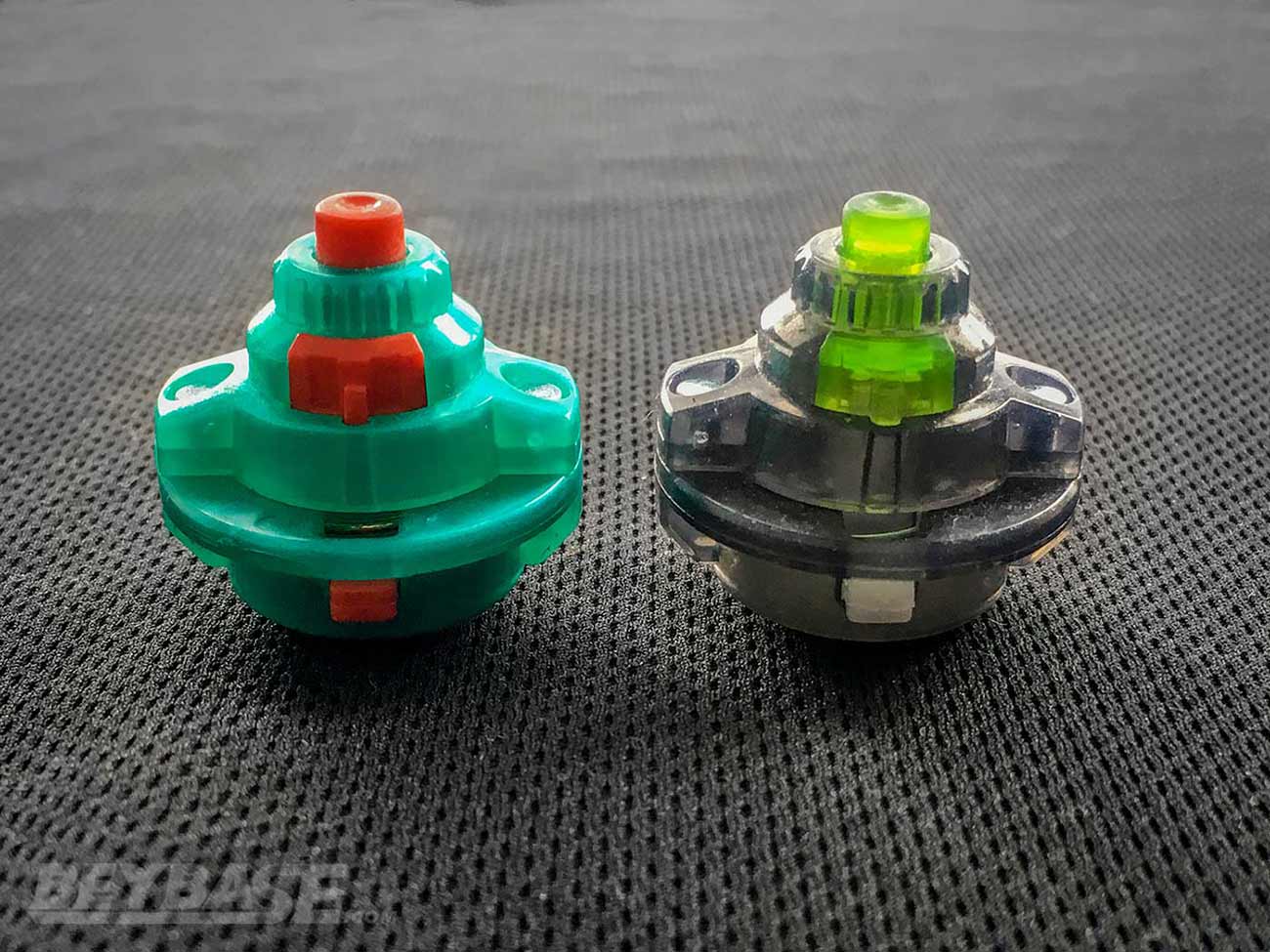
I even thought about having a Judgement and Rage based deck where Judgement would use Quick’ and Rage would use the normal Quick Driver, which I’m pretty sure everyone thought was useless upon release. However, because Beyblade Burst Sparking combos are less likely to burst to do the way the Ring and Chassis are attached together, using a non-Dash Driver is actually not as much of a burst liability as you might think in some cases.
How to Build JDb.Bl.Qc’
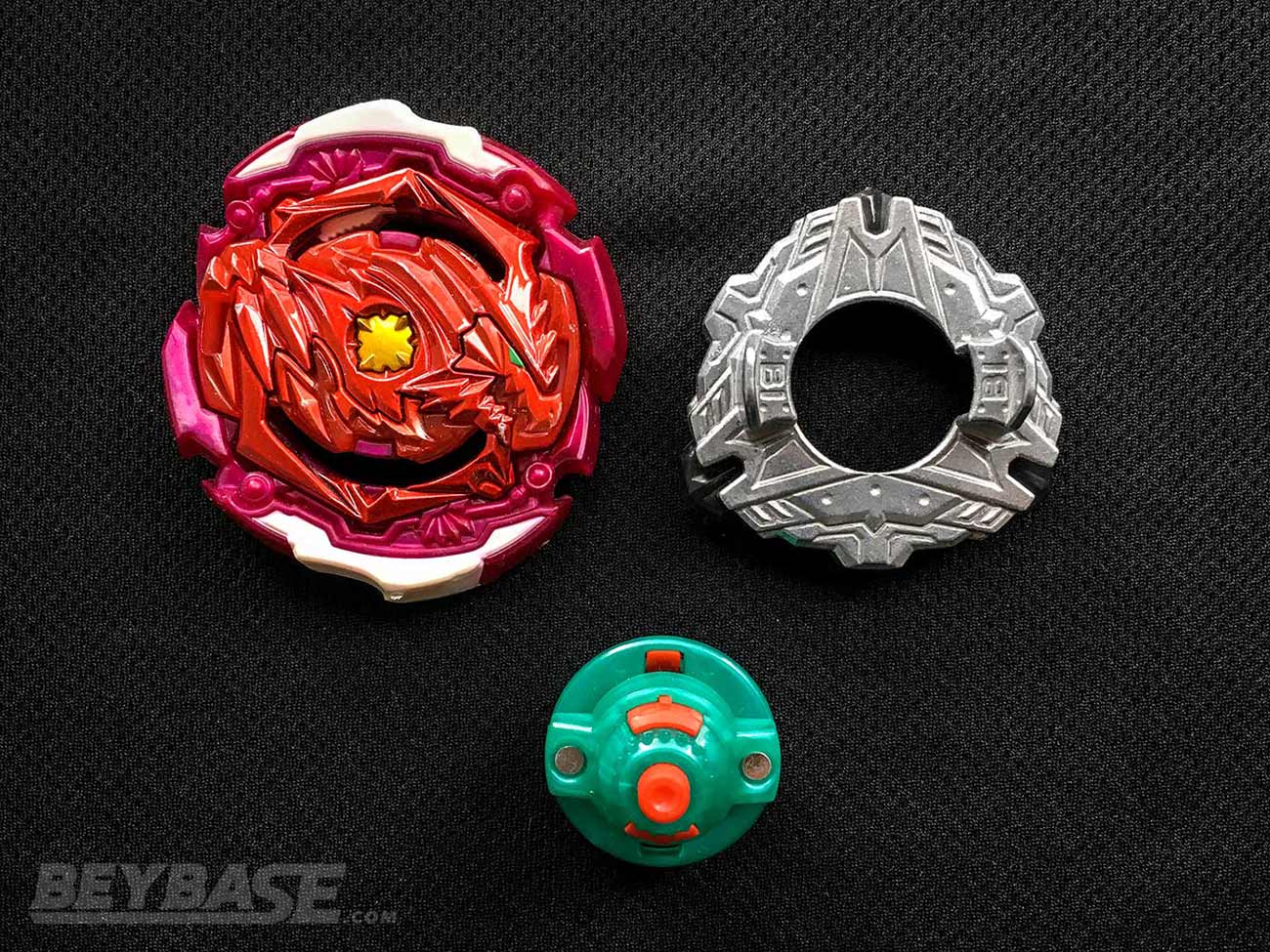
-
Judgement Layer Base (1 of the following):
-
Blitz Disk (1 of the following):
-
Quick’ Driver (1 of the following):
3. Refining Cases of Final Tournament Combos
With all of my research and testing complete, the final piece of the puzzle was to finalize and refine my set of tournament combos.
Recently, I’ve been placing a huge emphasis on simplifying and refining the sets of combos that I bring with me to tournaments in order to avoid building things on the spot as much as possible, enter events with a clearer vision and plan, and to have more direct experience with a smaller set of specific combos that I believe in based on my preparation.
I first talked about it in my BE A HIRO tournament report (“Refining my set of tournament-ready Beyblade combos” section).
What I’ve done for the standard Burst Format so far is condense myself down to using a basic six Beyblade WBBA case like this one with two spots for extra Drivers:

This picture shows the (almost) final set of combos and parts I planned to potentially use at the tournament (Judgement was a special outlier haha).
There is a bit of nuance here due to part wear as well.
For example, the Drift in the bottom left is slightly awakened (worn down) and therefore has slightly better opposite spin performance than a brand new one. But the brand new one in the top right is better suited to same spin matchups because it doesn’t move as erratically, especially when using the Dynamite Blade or Vanish Blade. So, depending on the situation I would interchange them.
The same goes for the Bearing Driver. I have multiple Bearing Drivers at multiple different states of wear; they each serve a different function related to how much same-spin or opposite-spin stamina I want out of my combo.
After the above photo was taken I made a final tweak and swapped out one of the Vanish Blades for the Roar Blade and one of the Giga Disks for the Nexus Disk. The reason for this was so that I could have a full DB Deck if I wanted to; that’s how much I was starting to believe in DB parts over Sparking parts.

Sponsored: Order the newest Beyblades at malloftoys.com!
Heads up: If you buy something through Mall of Toys, you won’t pay any extra, but I’ll get a small commission. This helps me keep things running. Thanks for your support!
Experimental Beyblade Tournament Rules
Before we dive into the report on the tournament itself, it’s important that I spend some time explaining the experimental rules we used for it.
Both of these changes were implemented in an effort to gather data and more real-world experience and feedback on potential rule changes and additions to WBO Organized Play in the future.
Many WBO Organizers seem to narrowly focus on ranked events, and for good reason … it’s hard to replicate the meaning and fun of such events! However, it’s also important for organizers to remember the value of unranked events like this for expanding our view of what the game can be in the future (as well as the value of just having fun!).
Modified WBBA 3on3 Battle Format (And A Comparison to Pick 3, Choose 1 Format)
The First Stage of this tournament was played using a modified version of the WBBA 3on3 Battle Format as described below. The Final Stage was played using WBO Deck Format.

WBBA 3on3 Battle Format Rules
This tournament will be played using an experimental non-WBO ruleset for the matches played: WBBA’s 3on3 Battle Format. This format is used by TAKARA-TOMY for some of their events in Asia. The rules are as follows:
1. Matches are to 3 points
Outspin = 1 Point
Knock Out = 1 Point
Burst = 2 Points
2. Deck Construction: 3 Beyblades
Each player constructs a deck consisting of 3 Beyblades. No parts may be repeated throughout each combination. The same rules from WBO’s Deck Format for repeating parts will apply (see the WBO Burst Format rulebook).
3. Inspection & Deck Sequencing
After inspection by the judge, each player will secretly place each of their combinations into one of the three numbered slots in their deck box (pictured above).
We will have these available to borrow at the event, but please bring your own if you have one.
4. Perform Battles in Sequence
Players perform battles following the sequence of the Beyblades in their deck box until one player scores 3 total points. This means for example that the Beyblades in the #1 slot will play each other, followed by #2 vs #2, and #3 vs. #3.
5. Ties
- If there is a tie at any point, the match will be replayed using the same two Beyblades. This may continue for up to three consecutive rounds.
- If after the third consecutive tie a winner cannot be determined, players are to advance to the next Beyblade in their deck or initiate the re-order sequence described below and start a new round.
- If neither player has earned 3 Points after all three match-ups have been played between all three Beyblades in each deck, players will re-order their entire deck in secret and then repeat step number four (“Perform Battles in Sequence”) until one player has earned 3 Points to determine the match winner.
Note: All other existing WBO Burst Format rules unrelated to the match ruleset outlined above will apply for this event.
What changes were made?
All other existing WBO Burst Format rules unrelated to the ruleset for WBBA 3on3 Battles were implemented, which meant that things like spin direction switching weren’t permitted, or removing Frames, and so forth that are permitted under WBBA’s general rules.
The other piece which may be an exception to this is the rules about ties seen above. Currently, the WBO has no method for breaking ties if they continue to happen repeatedly.
In this tournament, the rule about advancing to the next Beyblade in your deck after three consecutive ties did not come into play very much.
However, in the WBO Deck Format finals we did run into a few instances of many consecutive ties where this ruling may have been beneficial; especially in the final match of the tournament.
I can see and maybe support arguments which say ties should be continually redone, but the more I think about it, I might not be opposed to enforcing a similar consecutive ties ruling for WBO Deck Format.
Why use WBBA 3on3 Battle Format?
This is a format I have played many times over the years on my trips to Japan.
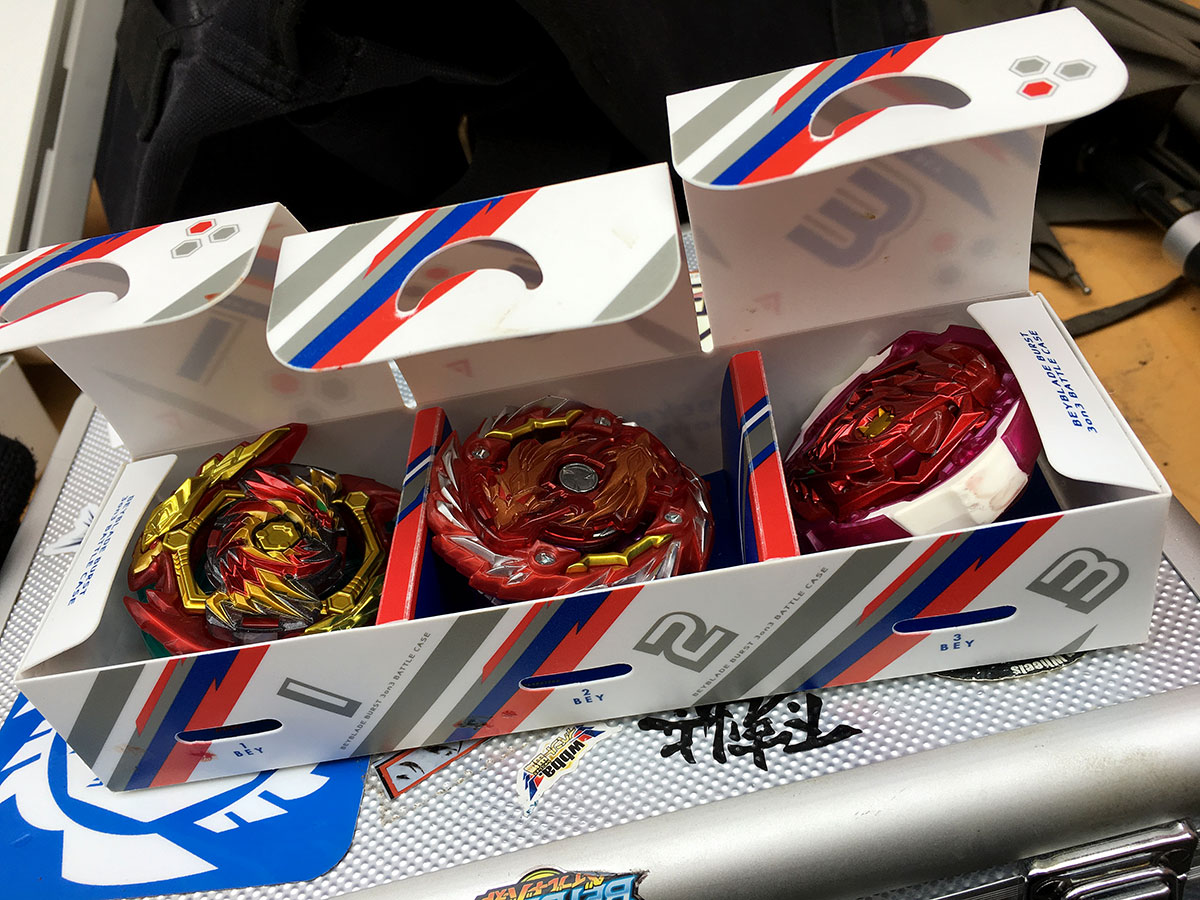
It’s what spurred me to try it out in a WBO tournament for the first time back in 2019. I talked about that event in one of the first articles published on BeyBase, What Is The Best Way To Play Beyblade? (WBBA 3on3 Battle Format Vs. WBO Deck Format).
There has been a lot of discussion lately as well–both internally among WBO Staff and externally in the community–about the best method of play for the first stage of Beyblade tournaments.
Another alternative battle format–Pick 3, Choose 1–was first proposed by Wombat in March of 2019 and later officially implemented as a standard option for unranked WBO Organized Play tournaments in November 2019. I personally tested that one in one of our few events last year here in Toronto, Justin Thunder Cloud’s Skateboarding Adventure.
So, for the past couple years now I (and the whole community) have really begun to question the traditional single Beyblade format and started to think about what we can do to make the first stage of tournaments more strategic and competitive without sacrificing all of the efficiency and inherent fairness of the regular single Beyblade match format.
Did WBBA 3on3 Battle Format work well?
The more I play with these alternative formats, the more it becomes clear that both are superior to the traditional single Beyblade format. So much so that I’m not sure I really want to play in another ranked tournament using the traditional format anymore.
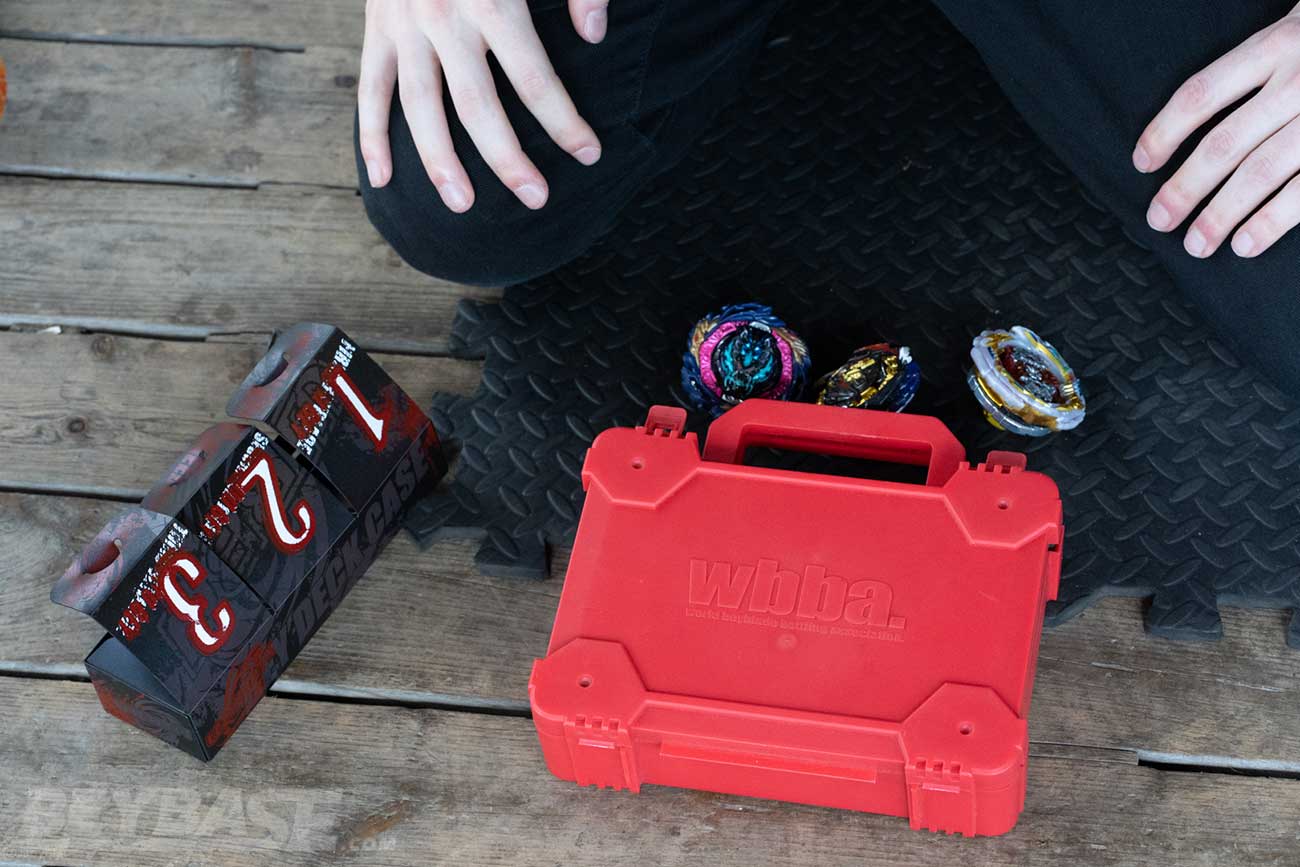
Feedback from Players
Feedback from players about WBBA 3on3 was in general, mixed, but positive.
Tahoor, BladerBeast, and Zankye all posted positive impressions on the WBO.
In my discussions with 1234beyblade at the event, his opinion was that purely in terms of competitive merit the tier of Beyblade battle formats looks something like this, with #1 being the best format:
- WBO Deck Format
- WBBA 3on3 Battle Format
- Pick 3, Choose 1 Format
- Traditional Single Beyblade Format
He felt WBBA 3on3 was much more engaging to watch and play than the ones below it because every round is different. This is better for spectating and it challenges players’ adaptability.
I’m undecided on WBBA 3on3 vs P3C1, but would generally agree with his list. I’d also personally put the WBBA’s 5G Battle Format as number five; I really dislike it.

Justin TC and OldSchool™ were a bit more apprehensive about WBBA 3on3 Format overall and expressed that they found it fun but wouldn’t like to ever see it used for ranked events.
Long-time Toronto Beyblade community member Minion also posted her thoughts, which raised some strong points:
I really enjoyed the diversity of the 3 on 3 battles, but I also felt like it diminished the ability to really perfect your play style with any one bey which to me has been a corner stone of good blading. Its difficult to really get a sense of if you are playing well, or if you just happen to have better parts in any given match. It seems a bit luck of the draw rather than deliberate strategy. Which is exciting and fun, but ultimately didn’t tell me anything about any of my combinations. The only rounds I won were with a totally on the spot random combination and not with the bey I had actually prepared to battle with.
I can definitely understand the point about the format diminishing your ability to perfect your play style with any one Beyblade. However, that ties into the aspect of WBBA 3on3 which I believe is key: the re-order sequence.
WBBA 3on3’s Key: The Re-Order Sequence
WBBA 3on3 is great because beyond the inherent luck element present in any format, it rewards skill and experience in an interesting way without being as complex as WBO Deck Format.
The first three rounds of any WBBA 3on3 battle are effectively a test run wherein players are given the opportunity to gather information about their opponent and experience in real time how their combos perform against their opponent in a relatively pressure-free environment.
This is because if you are a good player with a balanced deck construction, the chances that you can win at least one round within the first three is quite high.
Where the battle actually becomes the most interesting is the re-order phase after the third round. It is here that you are enabled to make significant choices based on real information about your opponent and their selections.
In Pick 3, Choose 1 Format you get to make a choice based on the real information presented to you before the battle begins, but beyond that your choice must be based on your previous experience or knowledge of particular matchups exclusively and then becomes limited during the battle as you are locked into a single Beyblade.
From round three and beyond in WBBA 3on3, you’re making choices that can not only be informed by previous knowledge or experience before the match began, but based on your current experience in the first three rounds that just passed.
That’s huge because it in some ways can level the playing field; it becomes not just about who had the most time to dedicate to testing (the knowledge garnered from this can most benefit you during the first three rounds), but who can adapt in real-time to real tournament experiences and data.

I can understand why some players may prefer P3C1, though.
WBBA 3on3 seems to lean closer towards rewarding real-time experience and adaptability. It forces more diversity in the metagame, making single strong parts feel less overwhelming and oppressive.
P3C1 leans closer towards rewarding theory and knowledge.
As such, I find it difficult to declare whether one is better than the other competitively speaking. They are merely different.
The Issue with WBBA 3on3 and P3C1: Organizational Complexity
However, the biggest objective issue with these formats remains not one of competitive legitimacy but of organizational complexity.
I’m still worried about how these formats scale to larger events. I first talked about this here.
This tournament ended up running an hour longer than expected. The following P3C1 Burst Limited Format event we hosted went faster, partially because there was one less player, but also because unfortunately WBBA 3on3 is inherently a bit more complex to set up than P3C1.
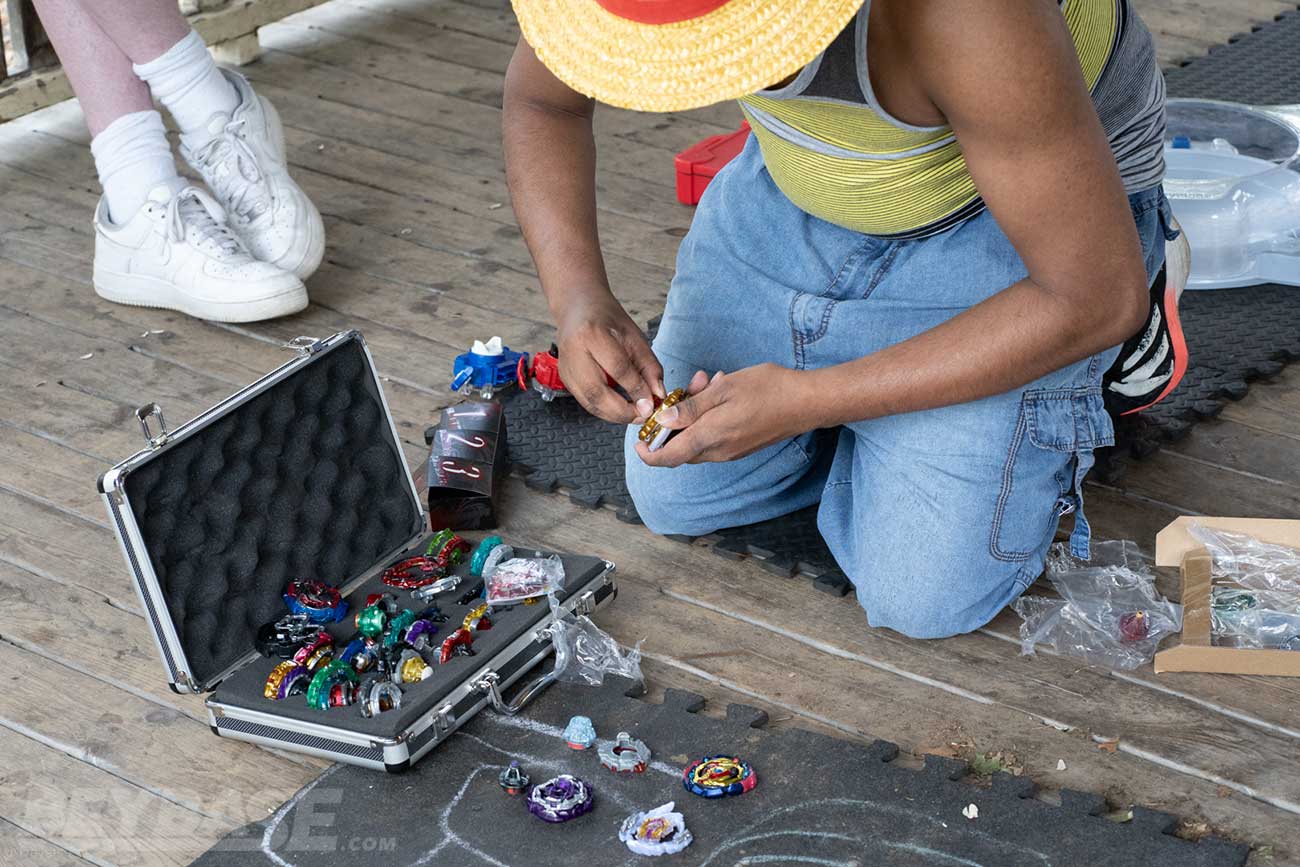
You have to not only pick three Beyblades, but sequence them, place them in the deck box, take them out of the deck box, switch launchers when needed (the new Custom BeyLauncher LR which requires disassembly to change spin direction didn’t help here), usually re-order them since most battles go beyond three rounds, and so forth.
With P3C1 you’re picking three Beyblades which does take more time than the traditional single Beyblade format, but after that and the inspection phase, it’s just like a normal battle.
While having the rule for WBBA 3on3 that players have to advance to the next Beyblade after three consecutive ties did help a couple battles from extending even longer–something which we did not employ during the P3C1 event–the battles nevertheless felt longer than P3C1.
I don’t think there’s any way around the fact these more complex battle formats produce longer battles.
In the past I’ve talked about the idea of making ranked tournaments more exclusive to smaller events so that these formats can exist for ranked events … but in reality that doesn’t seem like the correct route. We may in the end have to just accept that for larger events the traditional single Beyblade format will have to be used for organizational purposes.
And the unfortunate reality for fans of WBBA 3on3 is that maybe it becomes the odd man out here because it does seem to take longer to play and requires more equipment (deck boxes) to run. P3C1 seems shorter and doesn’t require any additional equipment versus the traditional single Beyblade format.
The most likely outcome to me is that perhaps one day there is a separate WBO ranking system for WBBA 3on3 events.
New “Play Area” & Updated “Knocked-Out” Definition
In this event we also tested out a new definition for “Play Area” and “Knocked-Out”, as described below.
What changes were made?
In the WBO’s current rulebooks “Play Area” was actually never explicitly defined and the “Knocked-Out” definition has been in consideration for a while now for some changes to make it clearer and easier to judge.
Here’s what we used:
Play Area
The Play Area is the space within the perimeter of the stadium, starting at the point which any exits, pockets, walls, or stadium cover openings begin (if they exist).
Knocked-Out
A Beyblade is knocked-out when after being launched:
- It does not enter the Play Area OR
- It fully exits the Play Area OR
- It partially exits the Play Area and does not return.
The above doesn’t spell it out explicitly, but the one key takeaway here for any players who have played in WBO events before is that this ruling abolishes the current ruling in the Burst BeyStadium Standard Type that causes Beyblades to be counted as knocked-out when they hit the back wall of the stadium cover and bounce back in.
With this rule, if you get knocked back and hit the back wall of the stadium cover in one of the exits but then return to the main play area, you’re still in-play.
This particular definition is not necessarily the one that will ultimately be implemented into ranked WBO Organized Play events; it’s simply one of the current proposals. There will likely be other variants we try down the road as well so that we can gather more real-world data and impressions about this change to a fundamental part of how the game operates.
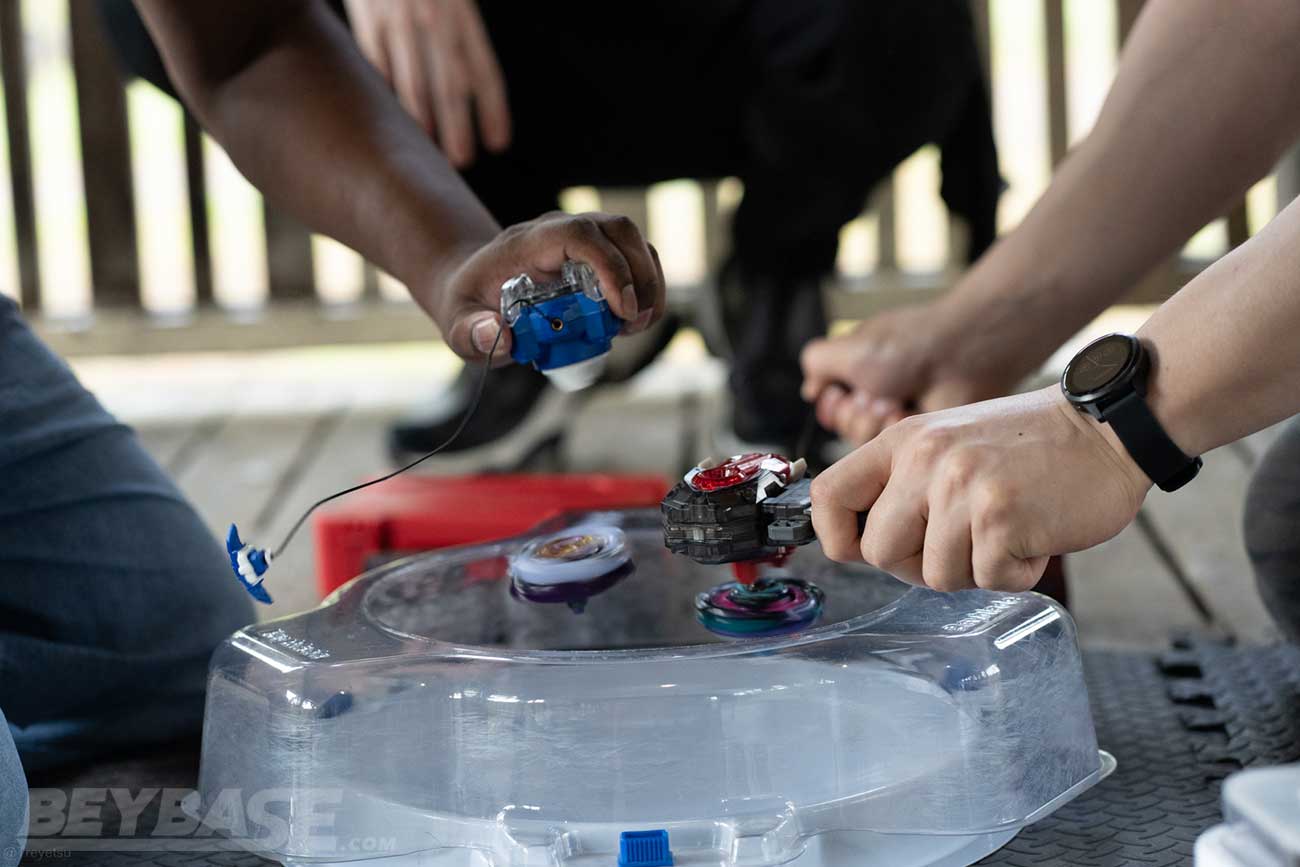
Why use change the rules?
At the most basic level, the reason for this is as I mentioned above: to clarify something which has never officially been defined (Play Area) and to make the game easier to judge (updated Knocked-Out definition).
However, the discussion which prompted this has been ongoing for what seems like several years now. At this point it’s become such a deep and controversial topic that it’s difficult to summarize.
If you’d like to learn more about it, I’d suggest reading the following:
- BeyBase: Redefining “Play Area” & “Knocked-Out” In Beyblade Stadiums (And How This Changes The Game)
- WBO: Consideration for rules update – Knockouts
- BeyBase: Where Should The “Play Area” Of A Beyblade Stadium Begin And End? (Extended Play Area Vs. Penalty Area)
- WBO: Should Sniping/Gattyaki be part of the game?
But to provide a bit of context: one of the reasons why our knocked-out definition was last changed in September 2017 was because at that time, attack types were so pitifully ineffective. The change was meant to give them a boost competitively. And it did.
However, times changed and attack types became shockingly powerful upon the release of the Judgement Layer Base and Zwei Layer Base in 2019.
This produced a metagame where there was a lot more recoil and Beyblades being knocked into the pockets of the Burst BeyStadium Standard Type. The unintended effect of this thanks to our rule was that it now started to become harder to judge certain battles because of how fast things could happen due to such recoil.
To make the game easier to judge and also do the opposite of what we initially set out to do (buff attack types), we want to change the ruling.
Did the new “Play Area” and “Knocked-Out” definitions work well?
I believe they did.
One of the good things about the increasing weight and size of Beyblade Burst parts is that bounce back situations from the exits feel less frequent.
As a result, the new definition we tested combined with this fact made judging a lot easier. It was always quite clear when a battle had ended.
The only situations that were a little bit tough to judge were those when both Beyblades enter an exit nearly simultaneously. In these situations, judges had to decide which one exited first.
However, I can’t recall any battles where there were any arguments about this. It was always pretty clear which one entered the pocket first, fully exited first, stopped spinning first, etc.
It also made for some pretty exciting battles to watch where Beyblades got “knocked-out” but did return to the Play Area.
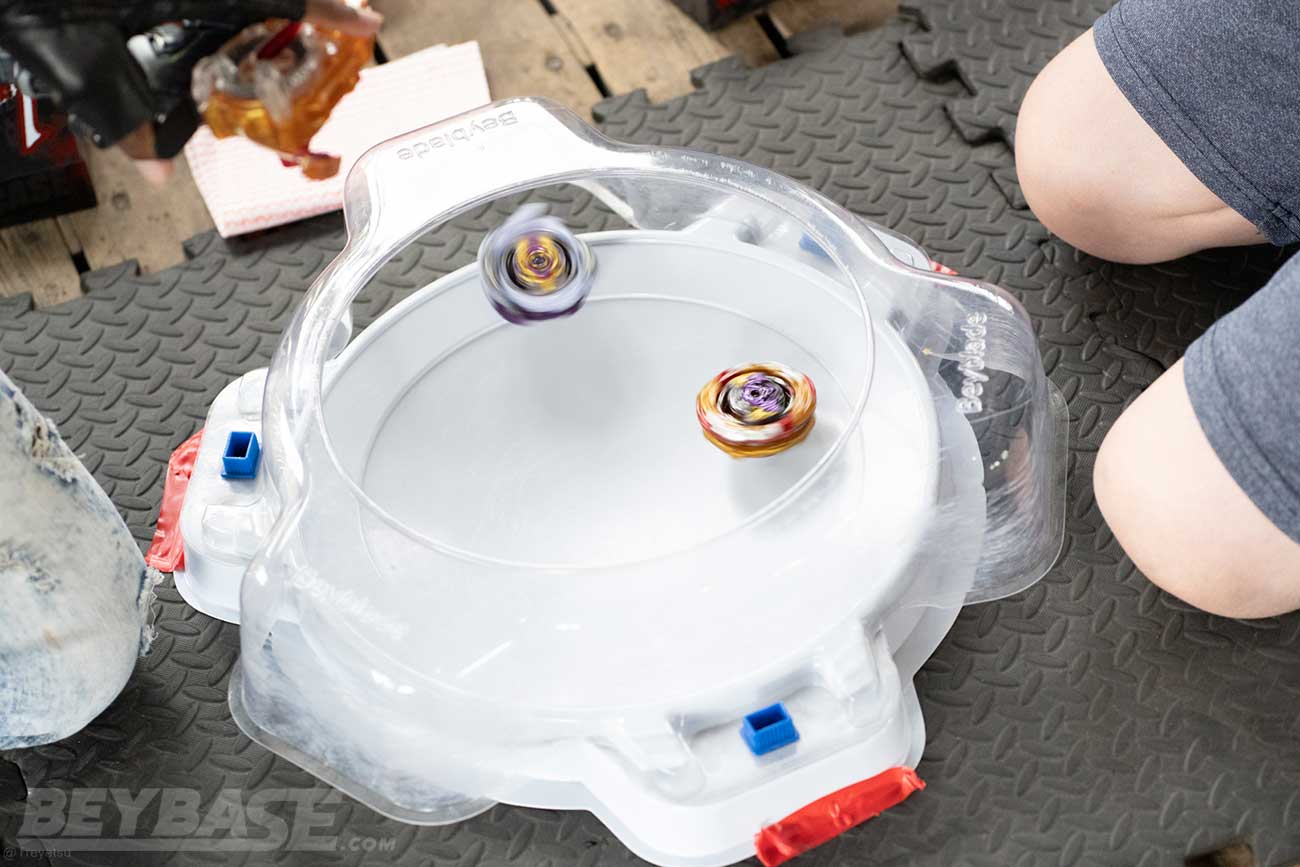
In those situations there were some where the “knocked-out” Beyblade that returned did win–which was very exciting–but there were also some where it returned with a lot of spin drained and ultimately lost anyways. So it didn’t seem “unfair” in general; the fact that you can return to the Play Area simply became another factor players needed to consider strategically.
In some ways, it actually incentivizes attack types because you don’t have to worry about self-KOing quite as much. Our current knocked-out ruling does allow for exiting the Play Area before any contact is made and then returning to it to not count for a point, but it doesn’t do anything for you if you’ve already touched your opponent in any fashion.
Minion and Zankye posted their positive impressions of the change as well.
What do you think? Comment below!
I’d love to hear any thoughts on alternative first stage battle formats like WBBA 3on3 or Pick 3 Choose 1 as well as the new Play Area and KO definitions we used at this tournament.
Which do you prefer and why? Comment below and let me know!
If you enjoyed reading this article, please also feel free to share it with any of your friends who are into playing Beyblade competitively or enjoy hosting tournaments.
BeyBase HIGH PARK THROWDOWN 12 Article Series
- Part 1: How to Prepare for a Competitive Beyblade Burst Tournament (HIGH PARK THROWDOWN 12 Report)
- Part 2: What are the Best Beyblade Burst Dynamite Battle Combos for Tournaments? (HIGH PARK THROWDOWN 12 Report)


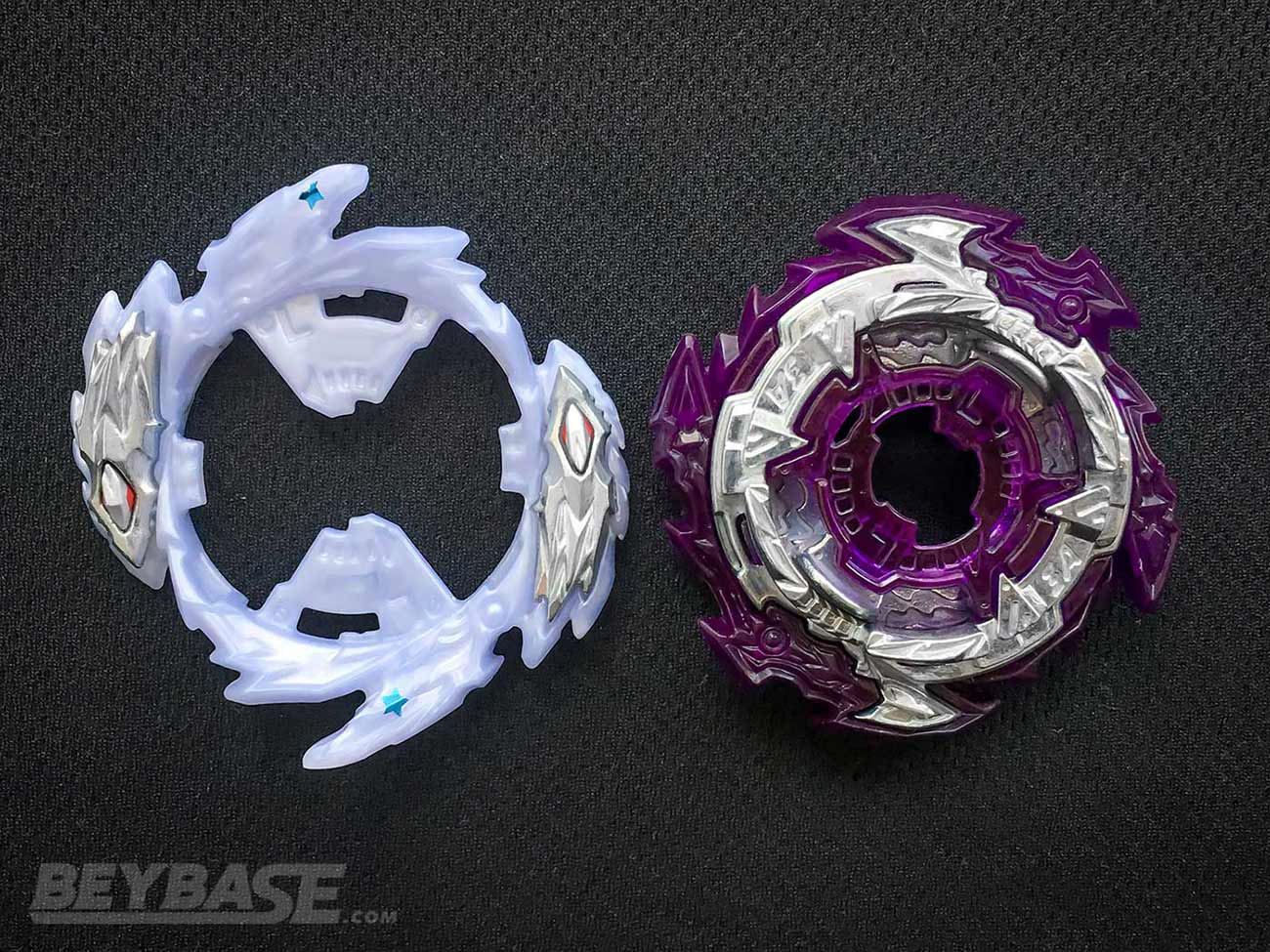

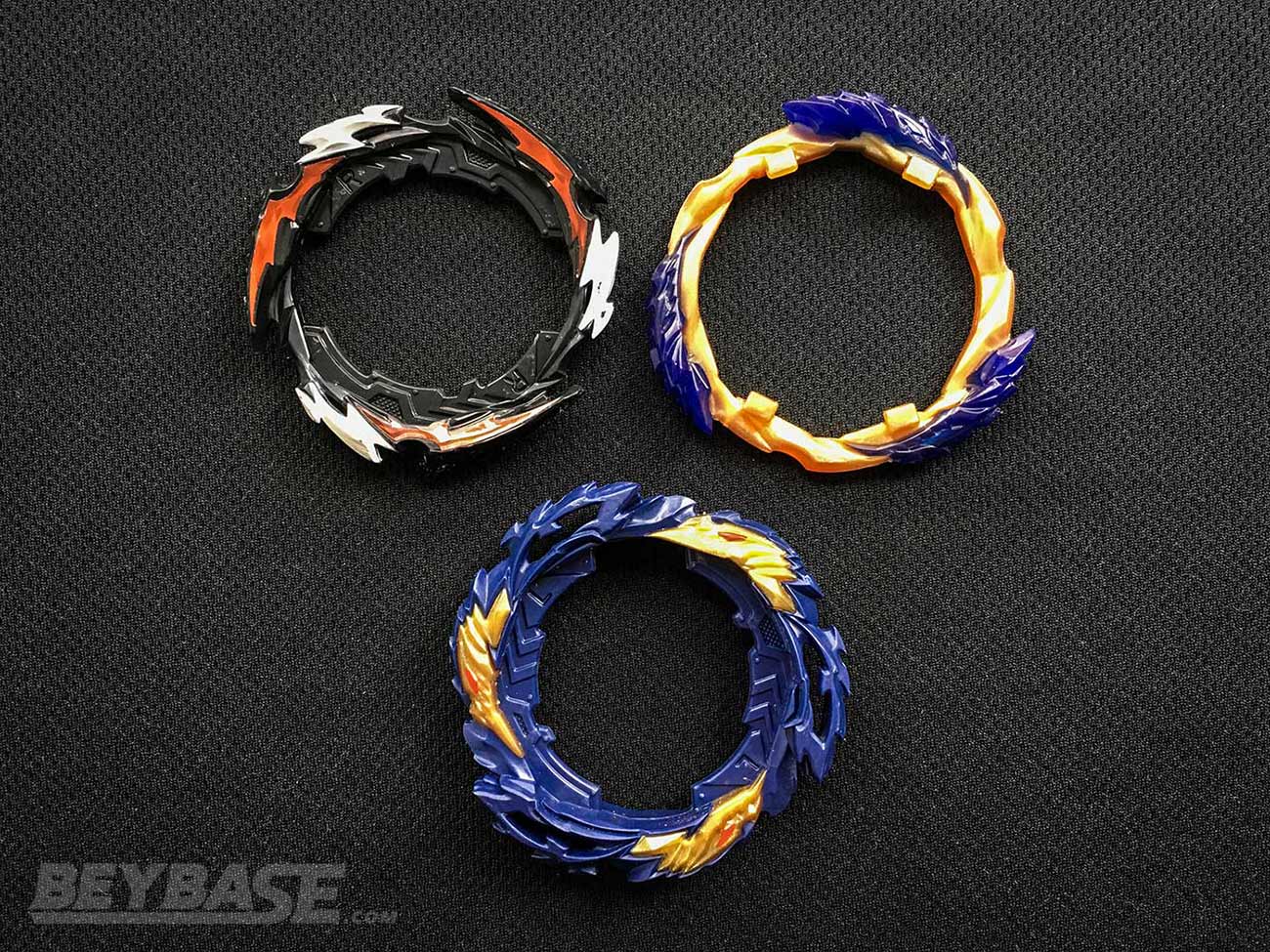
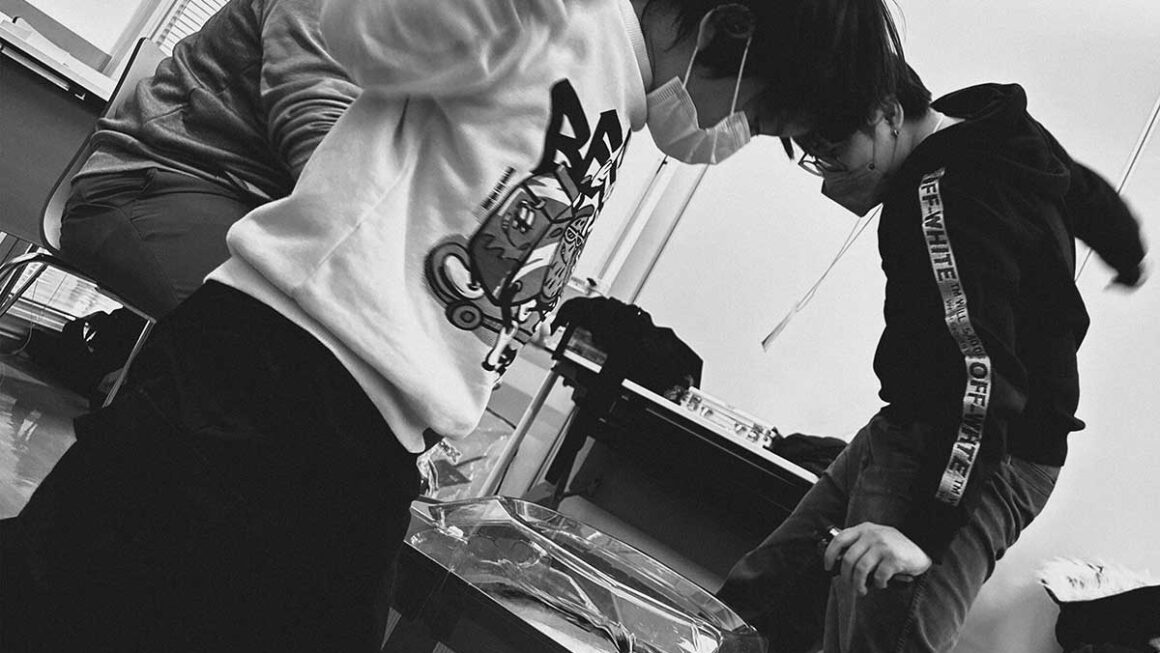
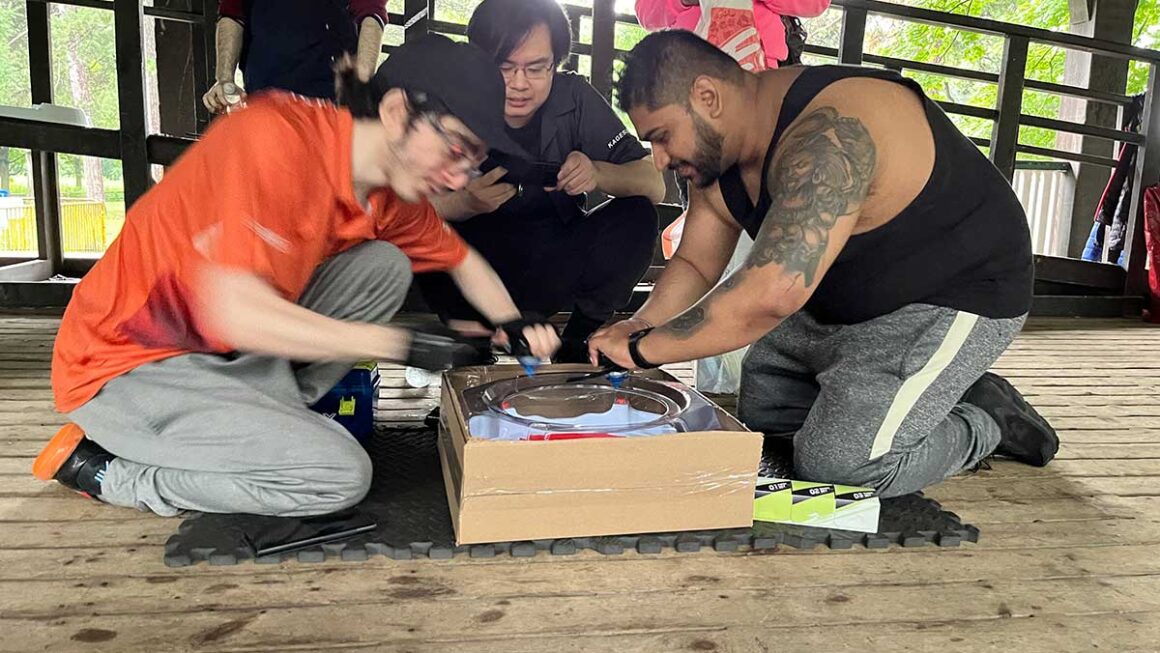

I noticed you made a typo! In “TESTING THE NEW BEYBLADE BURST DYNAMITE BATTLE PARTS,” you typed in Roar as road in the paragraph below the list of DB parts you tested.
“The first four were the most obviously powerful parts from what I had observed so far, and then both Road and Bahamut were so new that I had to take some time to test them”
Thanks! I fixed it.
I respect you guys are experimenting and doing your own thing with the WBO, but me and my local community will stick with WBBA 5G and 3G. It’s more enjoyable and allows for more diversity of builds and not seeing too much of the same meta over and over dominated. If anything, we play that all 5G matches are played out and the player with the most points wins the match. This way, more parts that aren’t considered “top tier” can be used. This has been especially great since in my area, I hold classic GT limited 5G tournaments and we see a lot of surprising combos that beat the typical judgment, perfect, zwei, etc. You can have those in your deck, but since you will still need to play your entire 5G deck, you have to be more creative with your parts and combos. I’m also doing the same for the current DB meta. Since several weeks ago, this has already allowed me to discover using never, quick’ and xtreme’, rise, and other overlooked parts for competitive play, and successfully I might add. And this way, we see more than just tempest/wheel/xtend+, vanish, dynamite, etc. Anyways, I know this was long, but thanks for your articles. Your hard work is greatly appreciated my dude! Rock on!
Hi Captain Gamesta, thanks for reading! I’m curious to hear more about your experience with your local community. Are you in Asia somewhere?
Have you had any experience running 5G or 3on3 in large-scale events? My main concern with these formats is not their competitive legitimacy relative to the traditional single Beyblade format (although I do believe there is an argument to be made for some of the merits of that format), but with how much more complex they are for new players and to manage on a larger scale when you’re thinking about events with 70, 80, 90, 100 or more participants.
That said, has your local community ever tried WBO Deck Format (https://docs.google.com/document/d/1mbjw-Oi3m879V6zA6-OuKT2xaEBF8LfxqmLOgNQ-c9A/edit#heading=h.xdbpaxz5r0yh)? As far as I can remember, I’ve only ever heard universal praise for it. All the players I know who have tried things like 3on3 like it (as do I), but believe WBO Deck Format is superior if you had to rank them. It definitely challenges you in different ways than 5G or 3on3; players have more agency and ability to adjust their strategy mid-battle with combos because it isn’t necessarily just one and done for each matchup.
However, WBO Deck Format faces the same problems of scalability and accessibility that formats like 3on3 or 5G face. This is part of the reason why it’s normally used only for the Top 8/16/32 of our events.
Because, at the end of the day while players will always want what feels the most competitive, there are also organizational realities that need to be taken into consideration when you’re thinking about crafting a standard ruleset that can be applied consistently across the globe and used for ranking systems regardless of community size, as the WBO has done.
On another note, you also mentioned playing the “entire 5G deck”. Can you explain the rules you use for that? My dislike of 5G stems from the official rules which more often than not result in battles ending before the fourth or fifth Beyblade.
another typo, “I can definitely understan the”
Haha, thanks. Fixed. Stared at this for hours and hours and of course there is still a few typos like that. 🙃
Hey there Kei, I wanna ask you. Is there any difference in using Quick dash and Xtreme Dash? Because the only difference I found was the rubber tip.
Hi D.Nate! There is; the width of the rubber tip affects how quickly they move and how much stamina they have. Also, some versions of these Drivers have softer rubbers than others (particularly the original Xtreme’ from Shadow Amaterios in my opinion), which improves their performance in my opinion.
Great write up! I really enjoyed reading this. My personal list of format preference as of now would be:
1. WBO deck format
2. WBBA 3v3 deck format
3. WBBA 5G deck format
4. Pick 3 Chose 1 format
5. single bey format
With 1 being my most preferred and 5 being my least preferred.
Basically, I would like to avoid playing a entire match chained to a single Beyblade.
In regards to single bey formats and large ranked events, I don’t think large events’ realities necessarily need to affect smaller events. If a very large event needs to be single bey and single elimination, then so be it. If a smaller event, which still makes up the vast majority of events on the WBO, can be some form of deck format/P3C1 throughout its 8 player round robin play , I think that is just fine too li. I understand some may think ranked events need to be highly standardized to give the rankings legitimacy. I am not sure this is really always the case. Take Tennis as an example, does the fact that tennis players play on different surfaces make the ATP rankings illegitimate? They do also have different tournament formats. The WBO currently allows 5 fairly different stadiums for MFB ranked play. This is less standardization sure, but I don’t see a problem here either. I don’t know that we need to have a separate ranking system to make deck format work in first stage play.
Thanks, Shindog! I’m curious, what puts 5G above P3C1 and single Beyblade format for you? Why is avoiding playing with a single Beyblade important to you?
You may be right. I tend to lean more towards standardization because I like for more direct comparisons to be made.
But we already started going down the road of pseudo-standardization when we allowed things like multiple stadiums in some formats or invented and adopted WBO Deck Format for the final stage of events. Maybe allowing alternative formats for the first stage is the next step of that.
Would you say that if we are to accept that smaller ranked events can adopt alternative formats (whichever it may be) that it should be only one of those alternative formats? Or do you think for instance that P3C1 + WBO Deck and WBBA 3on3 + WBO Deck events should exist within the same ranking?
I wonder if allowing multiple combinations to exist is taking things a step too far. It feels more meaningful when the value and method of winning can be accurately measured and compared across as many events as possible. The skills it takes to win in one format are inevitably a bit different than another. We’ve already accepted this to a degree, but I don’t know where to draw the line between flexibility and chaos.
I think this is why I am more of a proponent of the idea that we should have a global ranking and then be very flexible branching out below that with separate rankings for other formats (whether that be based on generations of Beyblades or battle formats) so that we can have both an overview and then drill down to see who is actually the best in more specific areas of the game that demand more specific skills.
I think I would enjoy the resource management aspect of 5G enough over the single bey format and the P3C1. You don’t always reach Bey 4 and Bey 5, but I think we will find a wider range of parts in those spots. My aversion to the single bey format is well documented here:
https://worldbeyblade.org/Thread-Thoughts-and-concerns-on-Single-Bey-Format?highlight=Single+bey
If we were to adopt alternative formats for 1st stage, I would probably say 2 formats is enough for 1st stage. I don’t want the rulebook to get much bigger if possible. I think single bey stays for logistic reasons, and one other format out of 3v3, WBO deck, 5G, or P3C1 is enough. Actually, one of my favorite things about WBO deck in first stage is that it won’t affect the rulebook much at all. I personally don’t mind different 1st stage formats existing under the same ranking. We do have single bey and WBO deck, 2 different formats, existing under the same ranking system right now after all.
If the most important thing is so that “the value and method of winning can be accurately measured and compared across as many events as possible” then my #1 preference would make the most sense, which is WBO deck format for the entire events. I guess we can go back to single bey only…..
Why is Master Longinus and Roar Fifnir good? Also what parts can you awaken? Thank you for making articles and I read them every day.
Hey! Its really awesome your blog, really I’m not a great speaker of English but I wanna say one thing. This blog will be so usefull to BC Nexus, the first club of Panamá, my country. We are starting to organize tournaments, so…to the next time maybe use one of this formats, and personally I just heard about the format 3G, maybe I’ll investigate later and take the advice to preparme to competition, If I am the champion, I need defending the crown and keep enjoy of this funny game. Greetings!
Hey Panamablader, thank you so much for your comment and for reading! That’s awesome to hear. Good luck with your tournaments! If things go well, I’d highly encourage you to consider becoming an Organizer some day on worldbeyblade.org so that you can post your events there!